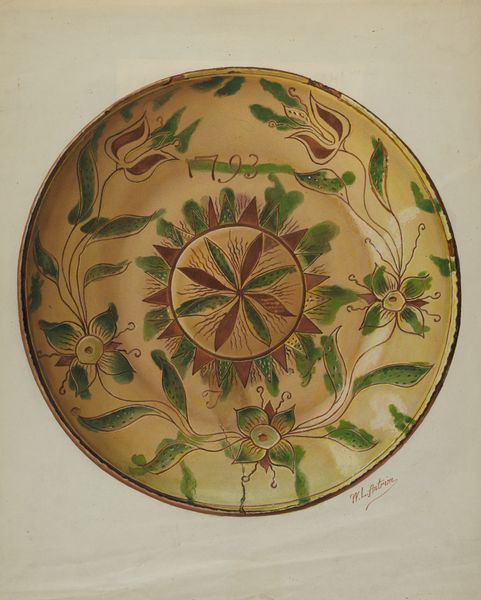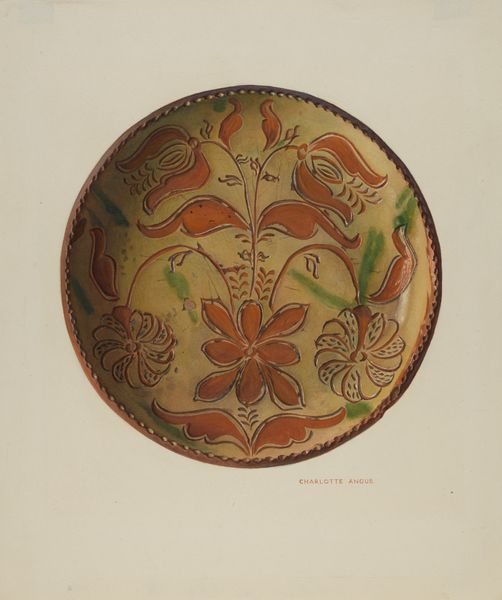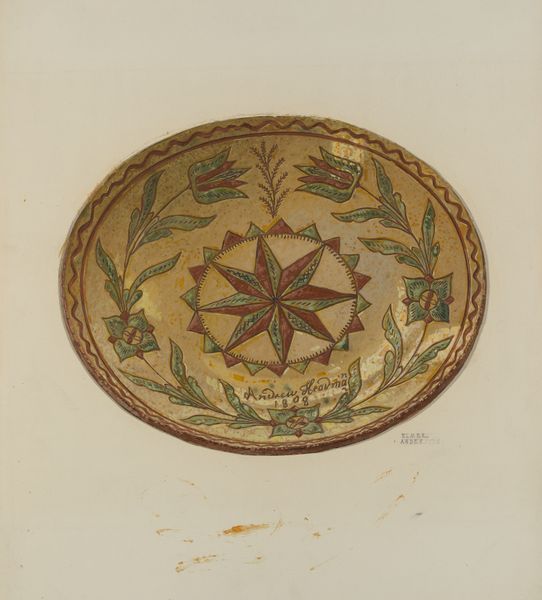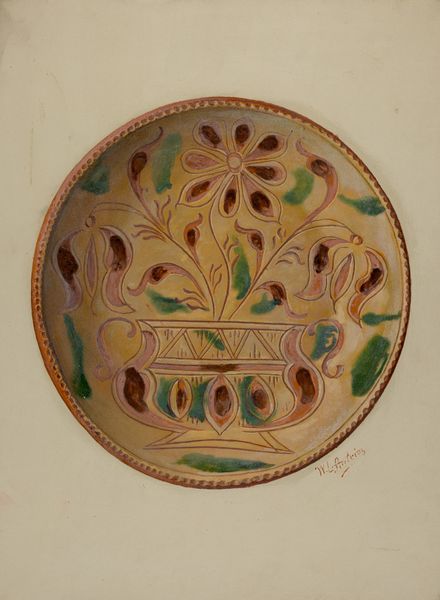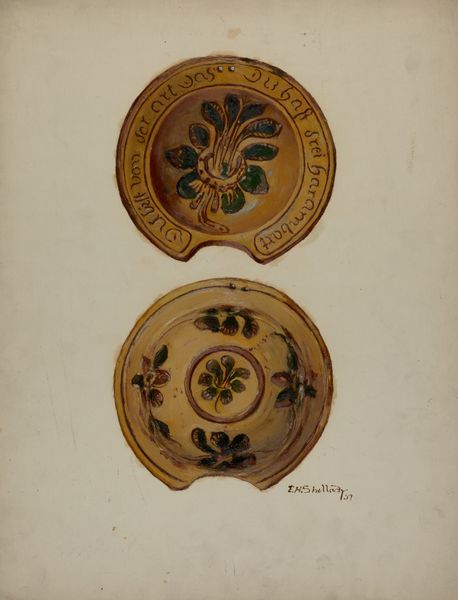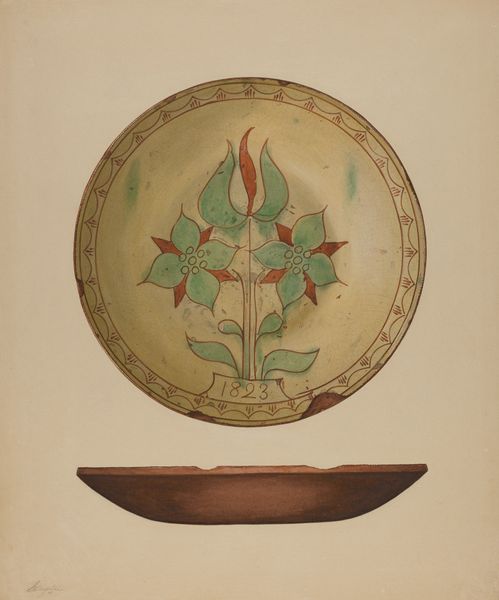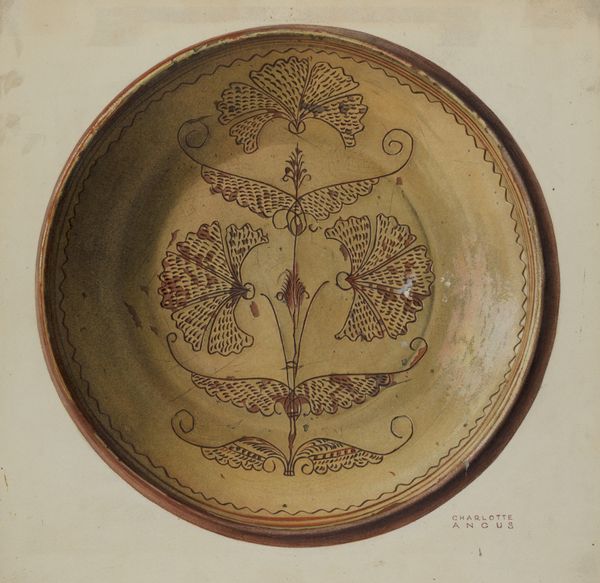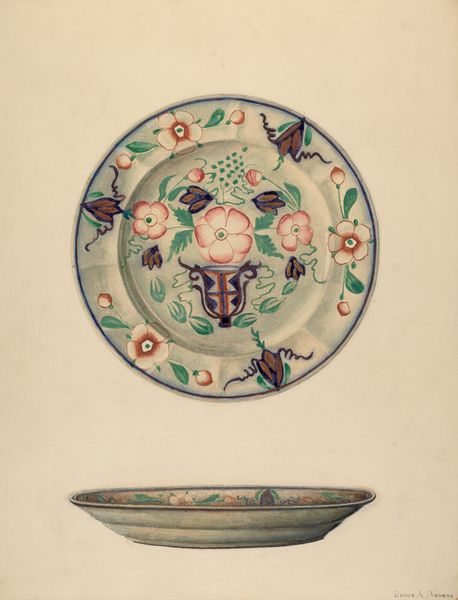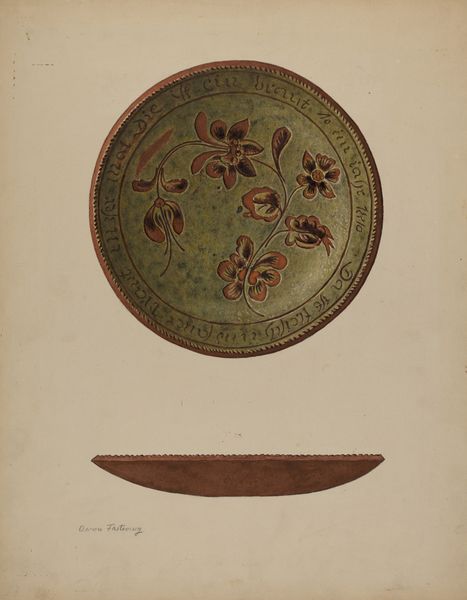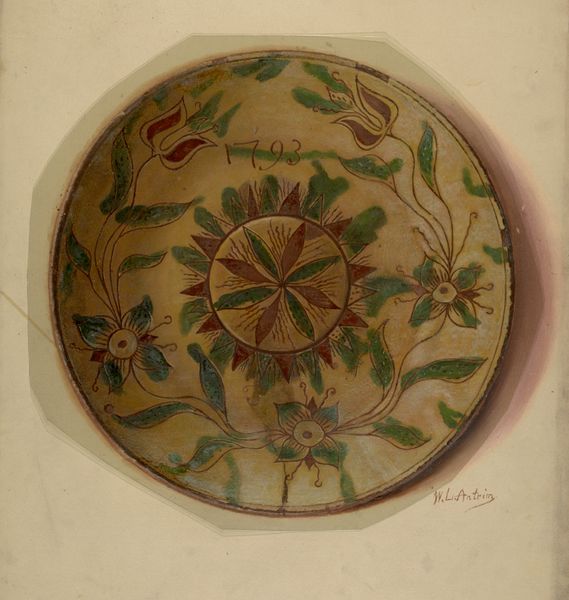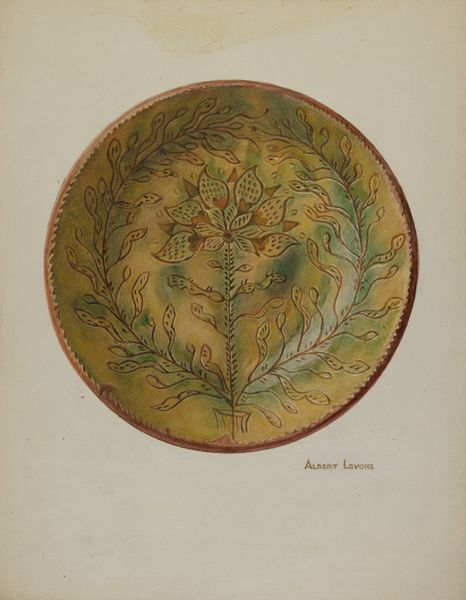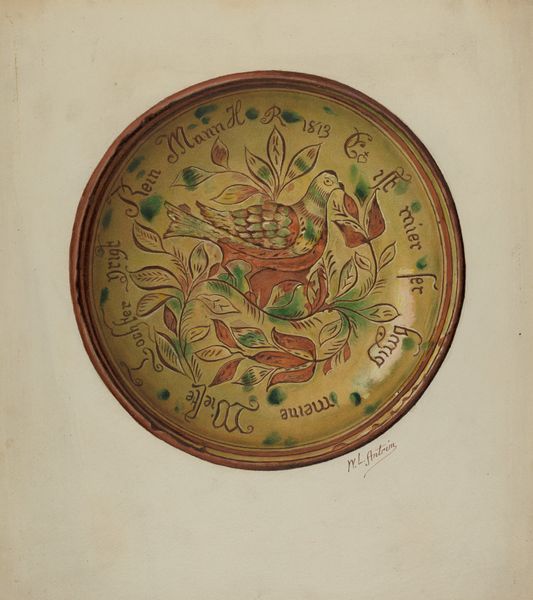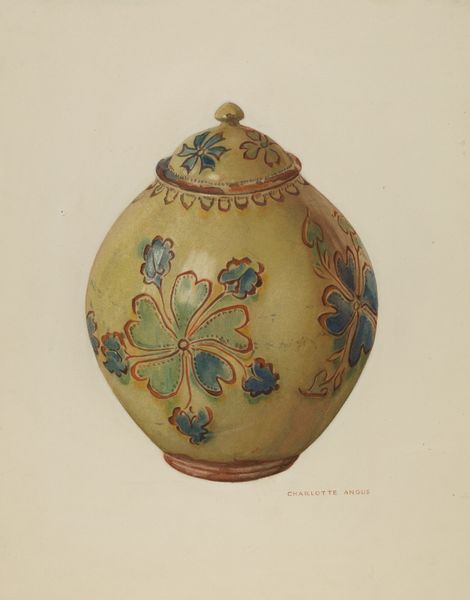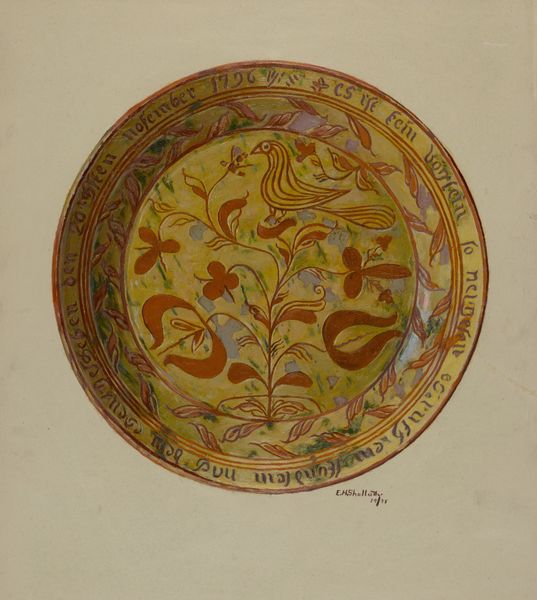
drawing, painting, watercolor
#
drawing
#
water colours
#
painting
#
watercolor
#
coloured pencil
#
decorative-art
#
watercolor
Dimensions: overall: 42.9 x 37.8 cm (16 7/8 x 14 7/8 in.)
Copyright: National Gallery of Art: CC0 1.0
Editor: Here we have a drawing of a "Pa. German Plate," made around 1936 by Charlotte Angus. It appears to be watercolor on paper. I find its folksy design quite charming. What strikes you about this work? Curator: Well, immediately, I think of process. This isn't just a design; it’s a carefully rendered *representation* of a plate, probably made for decorative rather than functional use. Notice the deliberate execution; it’s calling attention to the hand-made, the craft. We should consider the means by which this image, replicating an object used by laborers or families, enters the realm of "high art". Editor: That's an interesting point – its craftiness makes you think about labor and class? Curator: Precisely. Pennsylvania German folk art is so often viewed as quaint, but we must ask *who* produced these plates, and for whom? What materials were locally available, dictating its palette and construction? The "1822" on the plate is likely an allusion. Understanding how and why it references historical practices is vital to interpreting its statement. Editor: So you’re suggesting that its apparent simplicity hides complex issues of material access, craft, and even cultural identity being marketed as a style? Curator: Yes, think about the social context: mass production versus handcrafted goods. Angus made a watercolor; someone else probably manufactured the actual painted plates, which sold to different demographics at different price points. It is easy to see these beautiful colors; the flowers painted within the circle – however, understanding what material makes the surface so smooth, will give you the advantage of the meaning that relies within its time period. The commodification of folk art raises important questions about authenticity and cultural appropriation, isn't it? Editor: Definitely something I hadn't considered! Now I see how this seemingly simple drawing engages with complex questions about labor, materials, and the art market. Curator: Exactly. Art isn’t just about aesthetics; it's about production, consumption, and social relations.
Comments
No comments
Be the first to comment and join the conversation on the ultimate creative platform.
